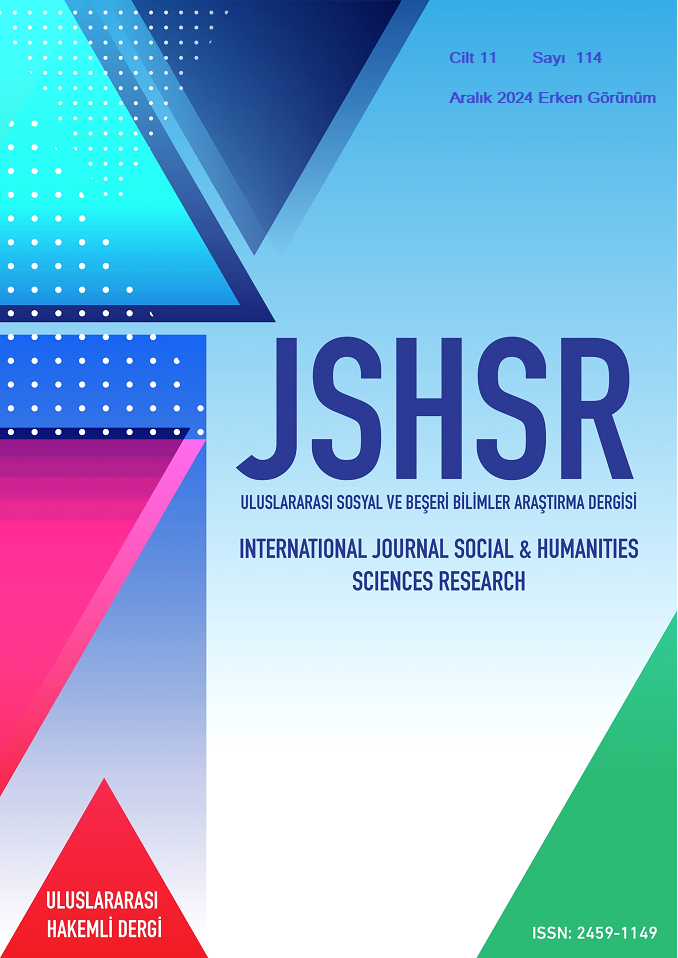Investigating the Impact of Education Expenditure on Labor Force Participation in Turkiye
DOI:
https://doi.org/10.5281/zenodo.14579917Keywords:
Labor Force, Education, TurkiyeAbstract
Grounded on key economic theories such as Human Capital Theory and Endogenous Growth Theory, this study investigates the long-term nexus between labor force participation and education expenditure in Turkiye during the period spanning from 1991 to 2021, utilizing advanced econometric methods, including Ng & Perron and Elliott, Rothenberg & Stock unit root tests, and Fourier Shin and Shin cointegration tests, to analyze the dynamics between these variables. The results confirm that both education expenditure and labor participation are non-stationary. Moreover, there is a piece of evidence exhibiting long-term cointegration between the employed variables, particularly under the OLS method. Furthermore, the reveals indicate a significant positive nexus between education expenditure and labor force participation, with a stronger effect identified through Dynamic Least Squares (DOLS) estimation compared to Fully Modified Least Squares (FMOLS), suggesting that increased investment in education can enhance labor market outcomes by improving workforce skills and employability. Policymakers should address employment challenges and consider prioritizing educational investment as a strategy to boost labor force participation. Moreover, investments in education can have a substantial and positive impact on labor force participation by improving the employability and skills of the workforce. Future research is required to provide deep investigation regarding the relationship between labor force and education.
References
Balcı, A. (2004). Sosyal Bilimlerde Araştırma: Yöntem, Teknik ve İlkeler. Pegema Yayınları.
Becker, G. S. (1964). Human Capital: A Theoretical and Empirical Analysis, with Special Reference to Education. University of Chicago Press.
Ben-Porath, Y. (1967). The production of human capital and the life cycle of earnings. Journal of Political Economy, 75(4), 352-365.
Dlugosch, D. (2023). Labour market and education reforms are needed to create more and better jobs. In OECD Economic Surveys: Türkiye 2023. OECD. https://doi.org/10.1787/6d27aecf-en
Doeringer, P. B., & Piore, M. J. (1971). Internal Labor Markets and Manpower Analysis. Heath and Company.
Elliott, G., Rothenberg, T. J., & Stock, J. H. (1996). Efficient tests for an autoregressive unit root. Econometrica, 64(4), 813–8136. https://doi.org/10.2307/2171846
Jovanovic, B. (1979). Job matching and the theory of turnover. Journal of Political Economy, 87(5), 972-990.
Mercan, M., & Sezer, S. (2014). The Effect of Education Expenditure on Economic Growth: The Case of Turkey. Procedia-Social and Behavioral Sciences, 109, 925– 30.
Ng, S., & Perron, P. (2001). Lag length selection and the construction of unit root tests with good size and power. Econometrica, 69(6), 1519–1554.
Özaydın, M. M., Metin, B., & Kurnaz, I. (2009). The role of education in labor markets in Turkey: A labor demand-side approach. Gazi Üniversitesi İktisadi ve İdari Bilimler Fakültesi Dergisi, 11(2), 141-170.
Parasız, İ., & Bildirici, M. (2002). Modern Emek Ekonomisi. Ezgi Kitabevi Yayınları.
Piore, M. J., Wachter, M. L., & Gordon, R. A. (1974). Primary and secondary labor markets: A critique of the dual approach. Brookings Papers on Economic Activity, 1974(3).
Psacharopoulos, G., & Woodhall, M. (1994). Education for Development: An Analysis of Investment Choices. Oxford University Press.
Romer, P. M. (1990). Endogenous technological change. Journal of Political Economy, 98(5), S71-S102.
Sen, A. (1999). Development as Freedom. Oxford University Press.
Shin, Y. (1994). A residual-based test of the null of cointegration against the alternative of no cointegration. Econometric Theory, 10(1), 91–115.
Suna, H. E., Tanberkan, H., Eroğlu, E., Özet, M., & Gür, B. S. (2020). Horizontal Skills Mismatch in Vocational Education in Turkey: The Reasons for Out-of-Field Employment. İstanbul Üniversitesi Sosyoloji Dergisi, 40(2). https://doi.org/10.26650/sj.2020.40.2.0101
Şahin, L., Ersöz, H. Y., Demir, İ., Kocakaya, M. E., Akgül, O., & Bükey, A. M. (2023). The Relationship between Cause and Effect Dimensions of Young People’s Being “Not in Education, Employment, or Training (NEET)” in Turkey. Sustainability, 15(21), 15274. https://doi.org/10.3390/su152115274
Tsong, C.-C., Lee, C.-F., Tsai, L.-J., & Hu, T.-C. (2015). The Fourier approximation and testing for the null of cointegration. Empirical Economics, 51(3), 1085–1113. https://doi.org/10.1007/s00181-015-1028-6
Uyanık, Y. (2000). Eleme hipotezi: Eğitimin işgücü piyasalarında eleme fonksiyonu. Gazi Üniversitesi İİBF Dergisi, 2(1).
Downloads
Published
How to Cite
Issue
Section
License
Copyright (c) 2024 INTERNATIONAL JOURNAL OF SOCIAL HUMANITIES SCIENCES RESEARCH

This work is licensed under a Creative Commons Attribution 4.0 International License.


